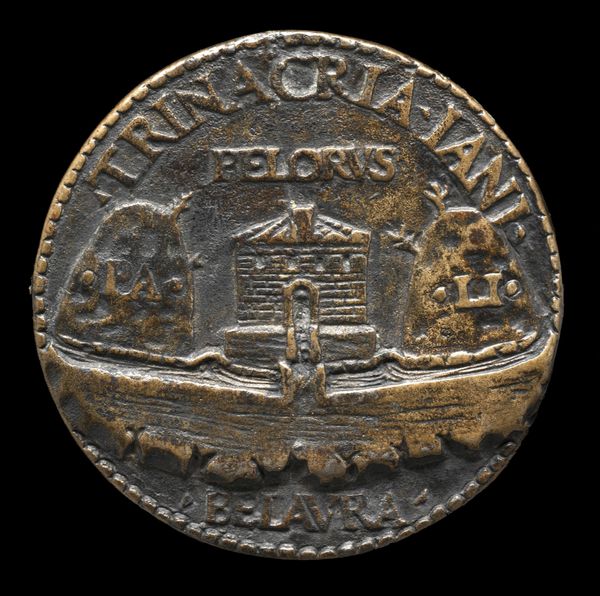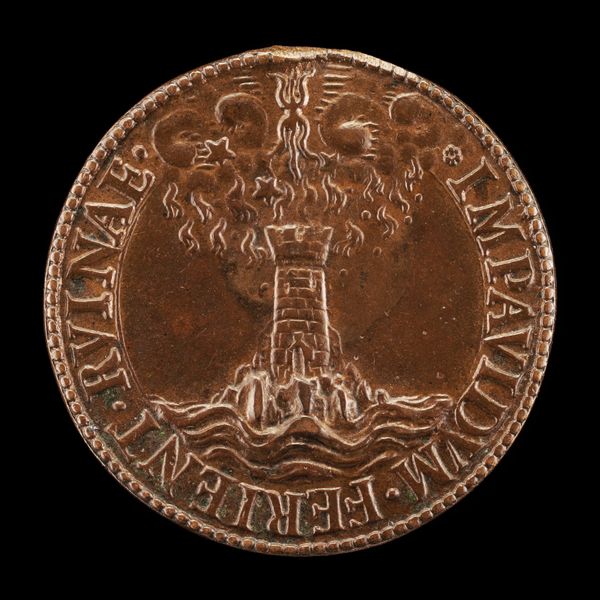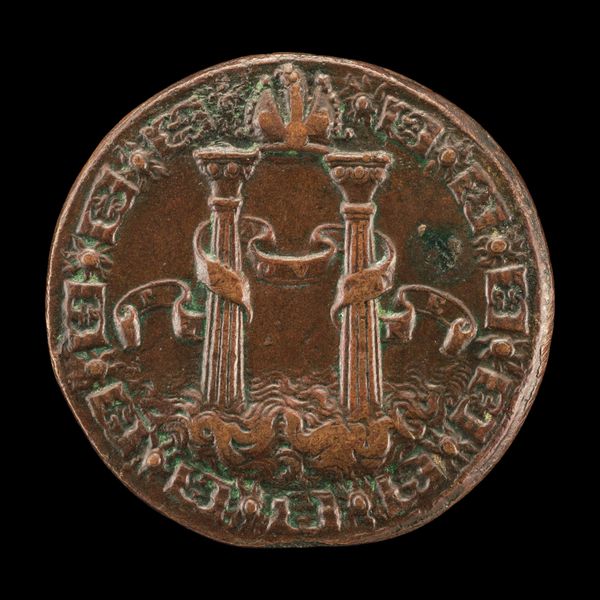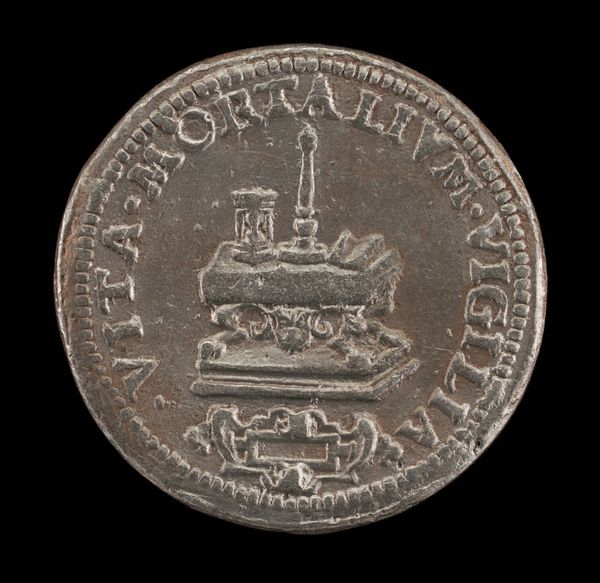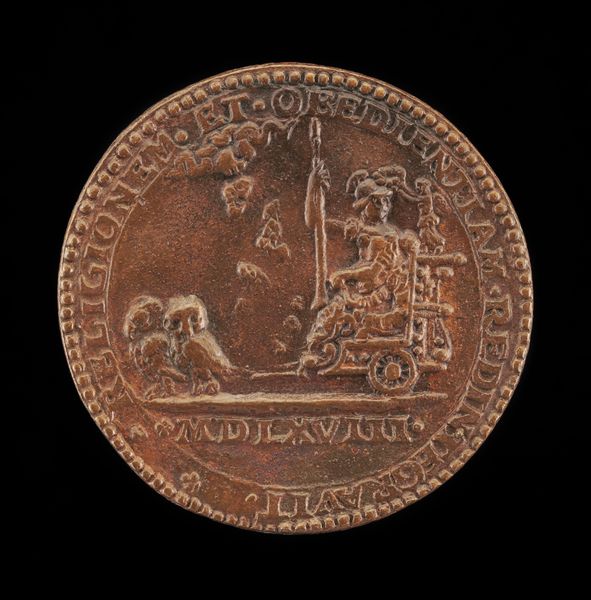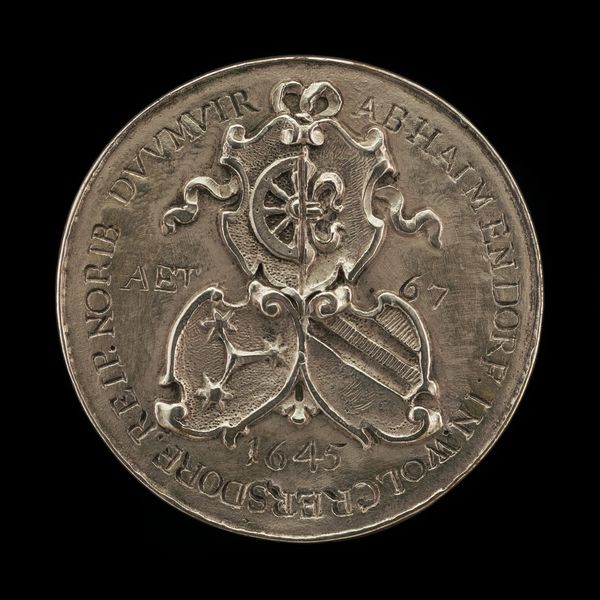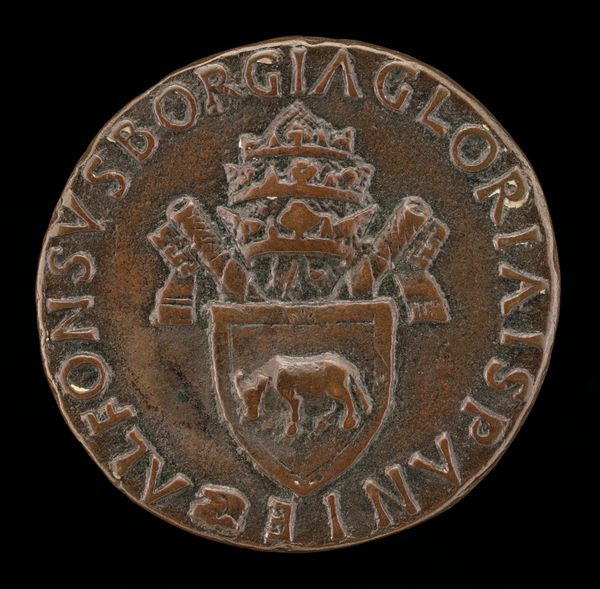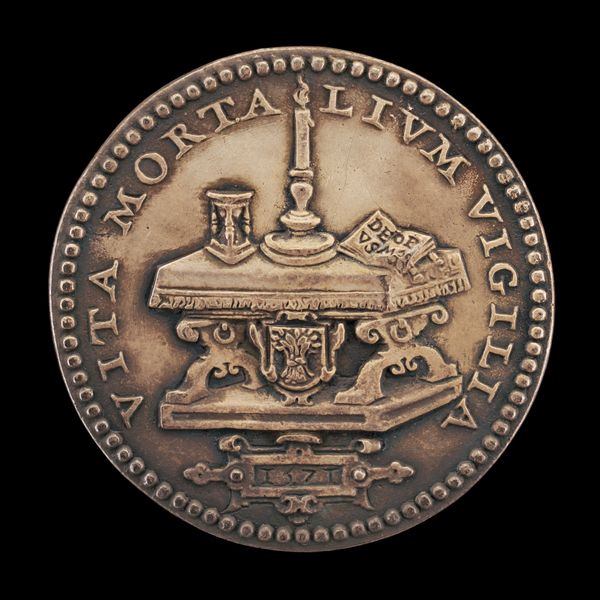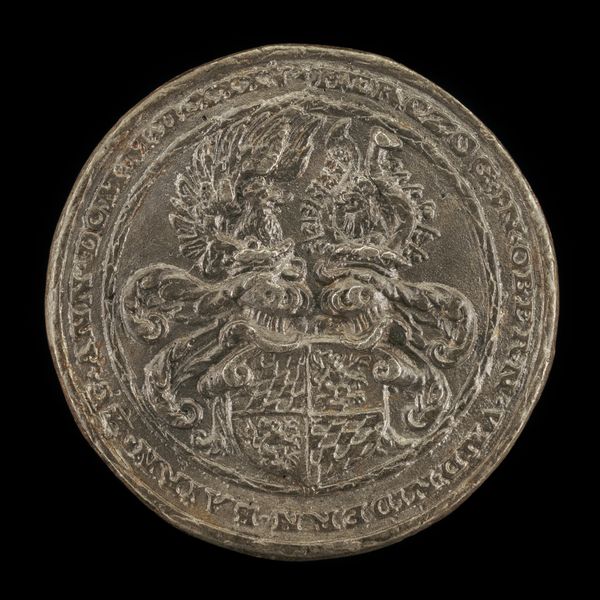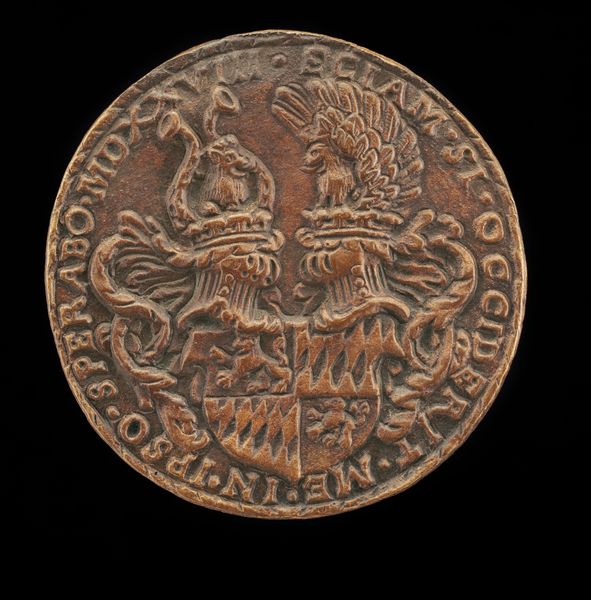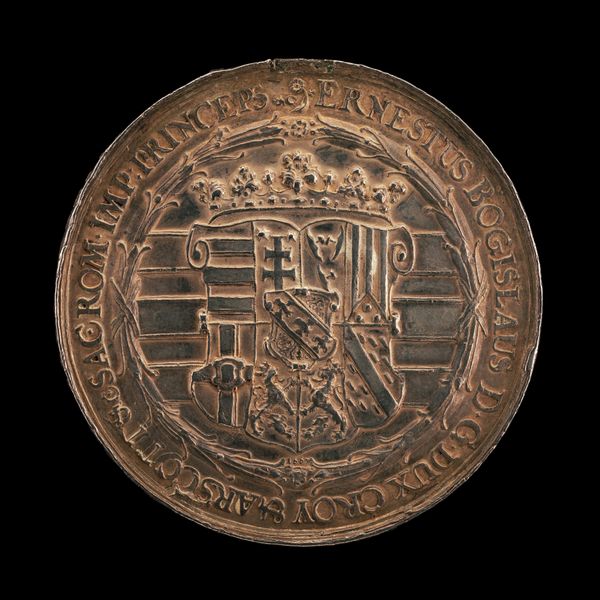![Church of San Francesco della Vigna [reverse] by Andrea Spinelli](/_next/image?url=https%3A%2F%2Fd2w8kbdekdi1gv.cloudfront.net%2FeyJidWNrZXQiOiAiYXJ0ZXJhLWltYWdlcy1idWNrZXQiLCAia2V5IjogImFydHdvcmtzLzU0ZjczNmEzLTViZjYtNDIwMi04YzNhLWIxN2Q4MDEwODliNS81NGY3MzZhMy01YmY2LTQyMDItOGMzYS1iMTdkODAxMDg5YjVfZnVsbC5qcGciLCAiZWRpdHMiOiB7InJlc2l6ZSI6IHsid2lkdGgiOiAxOTIwLCAiaGVpZ2h0IjogMTkyMCwgImZpdCI6ICJpbnNpZGUifX19&w=3840&q=75)
carving, relief, bronze, sculpture, architecture
#
3d sculpting
#
carving
#
stone
#
relief
#
bronze
#
sculpting
#
geometric
#
sculpture
#
carved
#
italian-renaissance
#
miniature
#
architecture
Dimensions: overall (diameter): 3.64 cm (1 7/16 in.) gross weight: 25.93 gr (0.057 lb.) axis: 6:00
Copyright: National Gallery of Art: CC0 1.0
Editor: This diminutive bronze relief, crafted by Andrea Spinelli in 1534, depicts the Church of San Francesco della Vigna. I find its miniature scale quite striking; it’s almost like a precious token. What speaks to you when you look at this work? Curator: The meticulous carving on such a small scale immediately brings to mind questions of production and consumption. This object asks us to think about Renaissance artistic labor – the precise skills involved, and who had access to such artistry. The bronze itself would have been a valuable commodity. Who commissioned such a piece and for what purpose? Editor: Perhaps for a wealthy patron or religious figure as a personal devotional item? Curator: Exactly. Its small size makes it incredibly portable, a private luxury reflecting not just faith, but wealth. Think about the networks involved in its creation – from the mining of the bronze to the transportation of materials and, finally, the dissemination of its image and the ideas it represents. Do you see any symbolic resonance with contemporary trends like "fast fashion" given how many middle class people seek to emulate those of higher status by purchasing lower-priced replicas? Editor: That's a compelling perspective. The craftsmanship speaks to exclusivity and controlled circulation in the Renaissance, but I appreciate how that’s so connected with how we understand manufacturing today. Curator: Indeed, by considering the means of production and distribution, we move beyond merely admiring the artistry to understanding the social fabric in which this work existed, and perhaps even its echoes in our current systems of value. Editor: I see the relationship between labor, materials, and the creation of value more clearly now. It gives me a richer understanding of the artwork's place in history and society. Curator: Absolutely. Thinking about the "how" and "why" of its making reveals layers beyond the immediate aesthetic appeal, leading us to understand art as an object deeply embedded in its time, yet connected to our own.
Comments
No comments
Be the first to comment and join the conversation on the ultimate creative platform.
